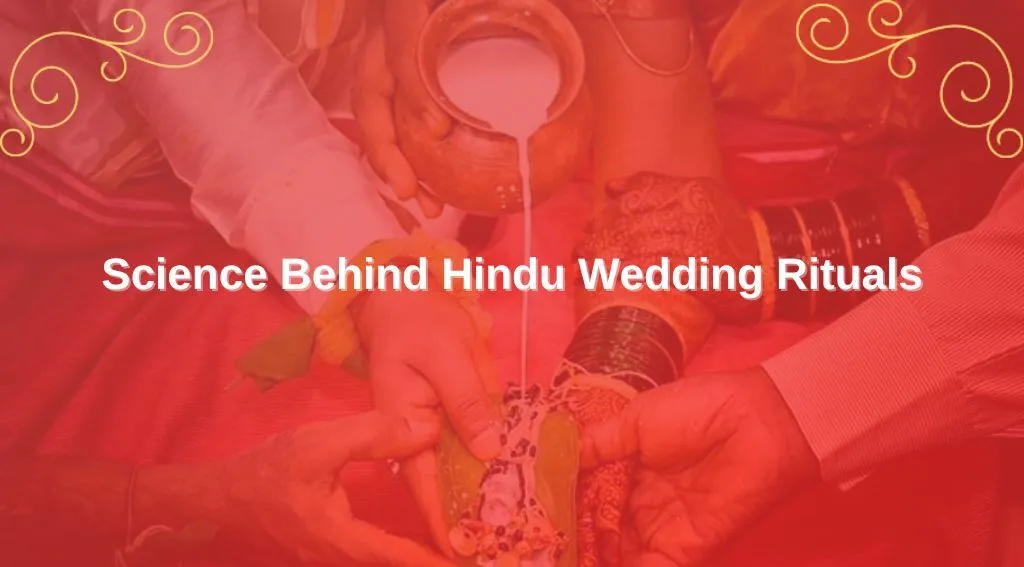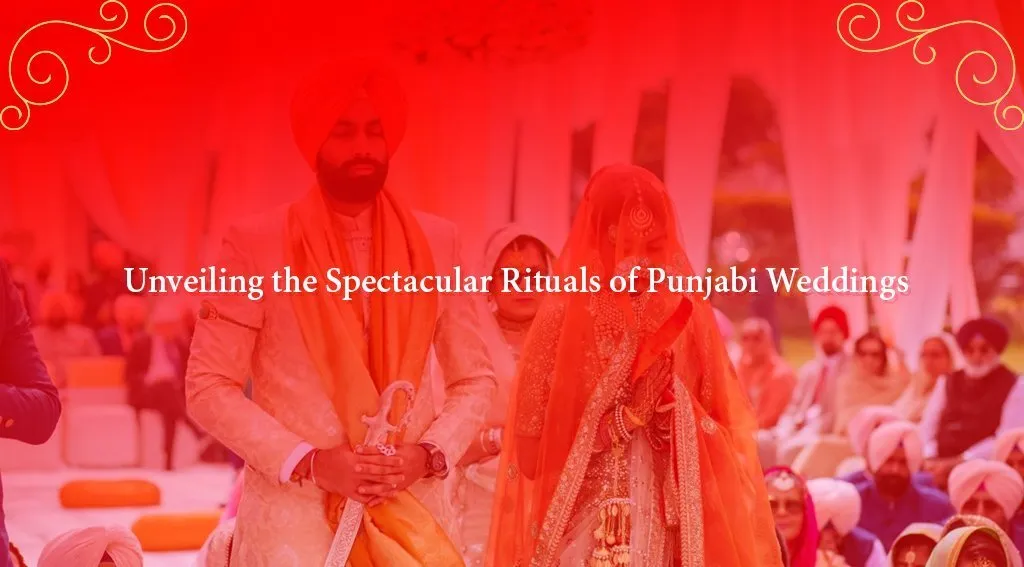Weddings are vivid threads in the foundation of Indian culture, carefully woven with generations-old customs. These Hindu Wedding traditions, which are sometimes dismissed as trivial rituals, have significant scientific reasons behind their surface.
From the application of henna to the importance of sacred fire, each ritual act has a deeper meaning based in ancient knowledge. Let’s look into the scientific Hindu Wedding Traditions weaving that supports 10 iconic Indian wedding rituals.
List of 10 Scientific Reasons Behind Hindu Wedding
Mehndi: Calming the Nerves in Hindu Wedding Traditions
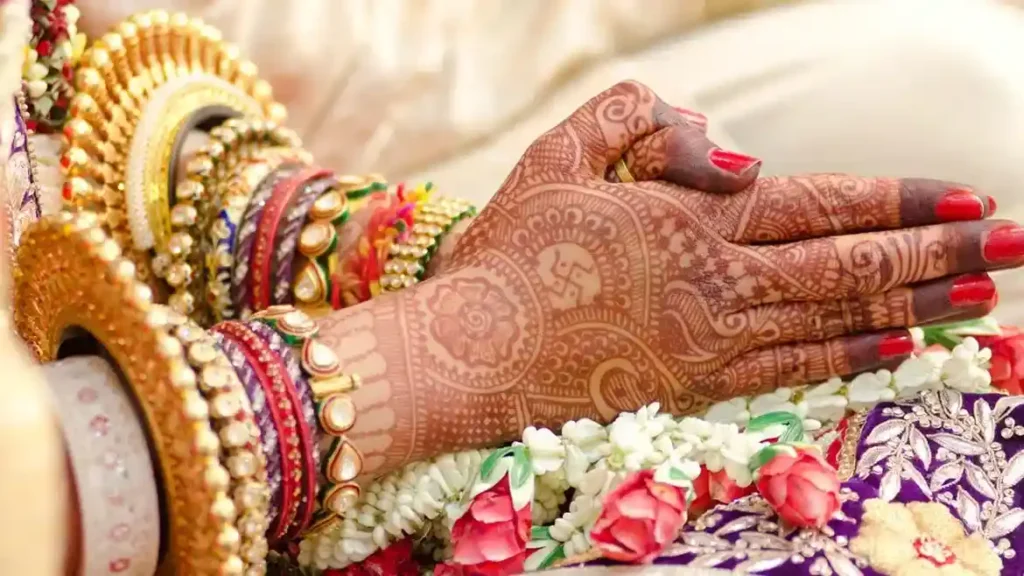
The Significance: The mehndi a powerful medicinal plant, serves as more than simply a hand ornament for the bride. When applied in beautiful patterns, it represents love, luck, and devotion between the pair.
Scientific Insight: Indian weddings, which are filled with excitement and expectation, can cause stress. Mehndi’s cooling effects help to reduce tension and prevent headaches and high temperatures. Its use prior to the wedding day prevents nerves from getting tight, resulting in a peaceful and respectful pair.
Also Read: Discover Bihar Wedding Traditions & Customs
Turmeric Ceremony: The Natural Glow
The Significance: Turmeric, which is prized for its medicinal benefits, is applied on both bride and groom before to the wedding, recognised as the Haldi ritual. It is thought to fend off spirits of evil and provide the pair with a dazzling radiance.
Scientifc Insight: Turmeric, an organic antiseptic, contains antibacterial properties. Its use not only cleanses the outer layer of skin but additionally promotes a better appearance. Turmeric contains curcumin, which has a moisturising effect and improves the couple’s look on their big day.
Bangles: A Balance of Beauty and Health
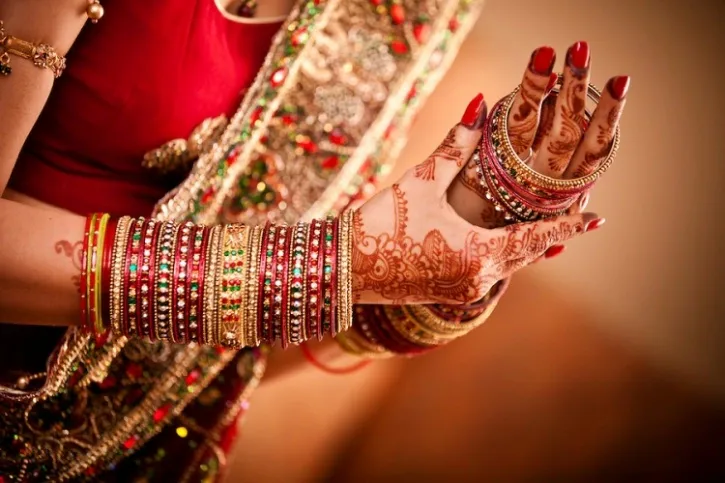
The Significance: Bangles decorate the wrists of Indian ladies, representing heritage and culture. They are said to improve attractiveness and wellbeing.
Scientifc Insight: Bangles, when worn, cause friction, which promotes blood circulation. The continual engagement of the wrist, which checks the pulse for various diseases, supports general wellness. Furthermore, the circular design of bangles allows for the flow of energy, which boosts the wearer’s vitality.
Sindoor: The Testament of Matrimony in Hindu Wedding Traditions
The significance: Sindoor, used by married Hindu women, represents marriage and long life for their spouses. It is a very ancient religious ceremony.
Scientific insight: Vermilion is , the crimson powder used in sindoor, includes turmeric, lime, and trace amounts of mercury.
Mercury, which is recognised for its cooling effects, relaxes the body and promotes a sense of wellbeing. When applied to the hair partition, an sindoor stimulate the pituitary gland, which is responsible for promoting emotional equilibrium and strengthening the marital relationship.
Toe Rings: Balancing Energy
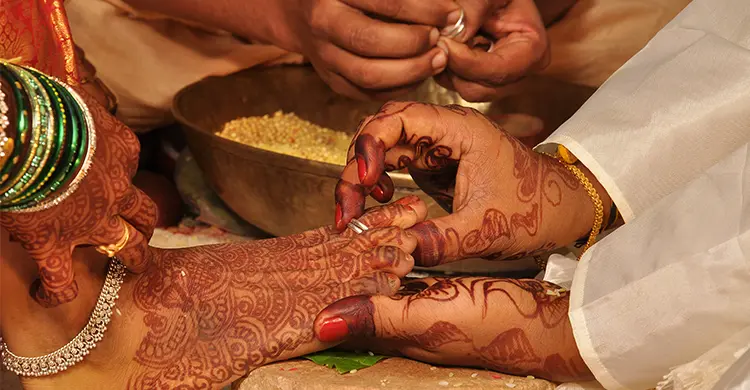
The Significance: Hindu women wear toe rings, especially on the second toe, to represent their married status.
Scientific Insight: The second toe has a nerve that connects to the heart and uterus. Wearing toe rings stimulates this nerve, which improves uterine health and regulates menstrual cycles. Furthermore, these rings serve as channels for Earth’s polar power balancing the body’s structure and promoting overall well-being.
Also Read: Discover Tamil Wedding Traditions and Customs
Holy fire: Cleansing and Purifying
The significance: The holy fire, over which the couple exchanges vows, represents purity and beautiful favours.
Scientific Insight: Fire, recognised for its cleansing inner mind, purifies the atmosphere by clearing any harmful energy.
During the wedding ritual, the items put to the fire generate smoke rich in herbal essences, which acts as a powerful purifying agent. Inhaling this smoke is said to offer medicinal benefits, benefiting both physical and mental health.
Sacred Thread: Symbol of Responsibility
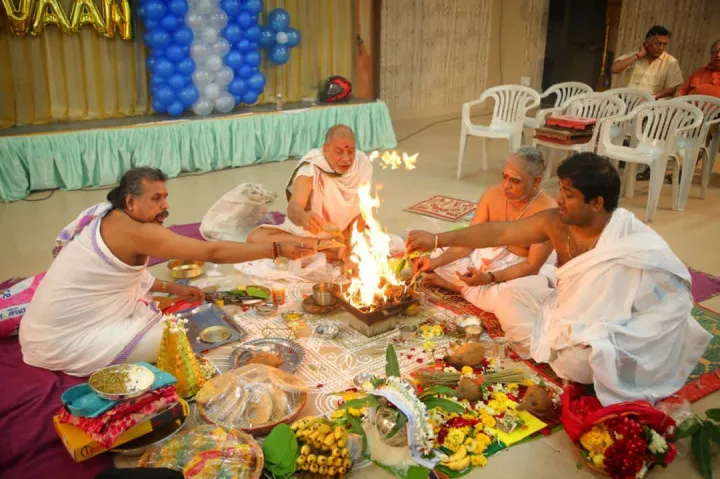
The significance: The holy thread, also known as the ‘Janeu,’ represents Hindu men’ starting into spiritual and wedding life.
Scientific Insight: The sacred thread, worn diagonally over the body, stimulates acupressure points, moving forward blood circulation and overall wellness. Besides, its situating compares to the sun oriented plexus, uplifts emotional harmony and mental clarity.
Seven Promises: The Establishment for Harmony
The Significance: The bride and groom exchange seven promises, vowing their commitment and duty to one another.
Scientific Insight: Each promise reflects an basic pillar of a solid marriage, from making a difference each other in times of got to creating a soul of respect and kindness. These pledges, based on shared believe and fellowship, set the foundation for a upbeat and respectful association.
Exchange of Arrangements: Symbolising Unity

The significance: The exchange of garlands, or ‘Jaimala,’ symbolises the couple’s mutual acceptance and respect.
Scientific Insight: Garlands produced from fresh flowers release fragrance that have been shown to generate sensations of joy and relaxation. The act of sharing garlands not only symbolises oneness, but it also provides a sensory experience that strengthens emotional bonds.
Mangalsutra: Emblem of Union
The significance: The Mangalsutra, a holy jewellery worn after marriage by Hindu women, represents the connection of marriage.
Scientific Insights: The black bead of the Mangalsutra, which are frequently worn in gold, are said to absorb bad energy and protect the person who wears them from harm. Furthermore, the necklace sits on the heart chakra, which promotes emotional connection as well as spiritual harmony within the marriage.
Conclusion:
In conclusion, Indian wedding customs, rich in symbolic activities and ceremonial behaviours, include a wealth of scientific knowledge. From supporting physical well-being to cultivating emotional peace, these traditions provide a brief approach to marriage and life.
As couples begin their marriage journey, embracing these rituals not only honours their unique cultural history, but also enhances their bond with timeless knowledge and benefits.
FAQ
Why are henna and turmeric used at Indian weddings?
Mehndi and turmeric are used at Indian weddings for cultural and scientific reasons. Mehndi is thought to offer cooling characteristics that help relieve stress and strain, whilst turmeric is recognised for its antibacterial and moisturising benefits, which improve the couple’s beauty on their big day.
What is the importance of bangles in Indian wedding traditions?
Bangles represent tradition and culture in Indian marriages. They are worn not just for their aesthetic value, but also for health reasons. Bangles’ friction encourages blood circulation, improving general well-being, and their circular form allows energy to circulate, adding to the wearer’s vitality.
Why is sindoor used by married Hindu women?
Sindoor, used by wedded Hindu women, represents marriage and lifespan for their spouses. Scientifically speaking, the vermilion used in sindoor comprises substances like as turmeric and mercury, both of which have cooling effects that promote mental equilibrium and wellness.
What is the importance of toe rings in Indian marriages?
Hindu brides wear foot rings, particularly on the second toe, to symbolise the status of their marriage. Toe rings activate a nerve that connects to the heart and uterus, which promotes uterine health and regulates menstrual cycles. They also operate as conduits for the earth’s polar energy, which helps to balance the body’s energies.

